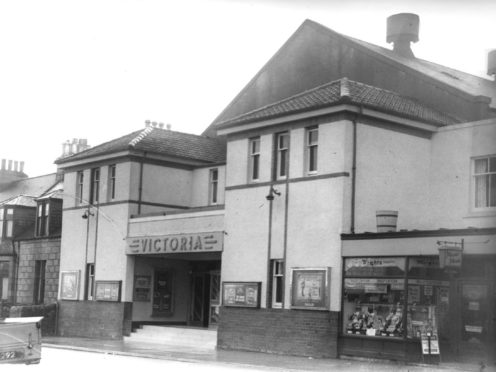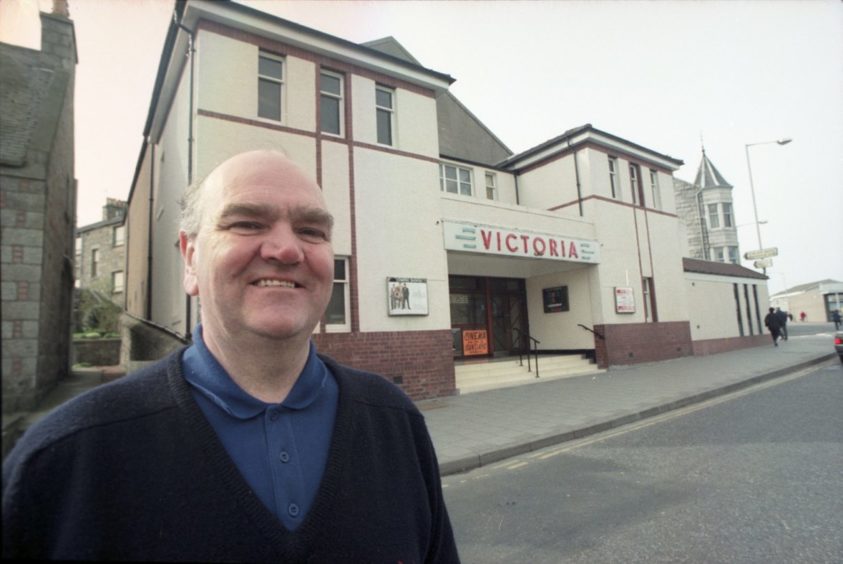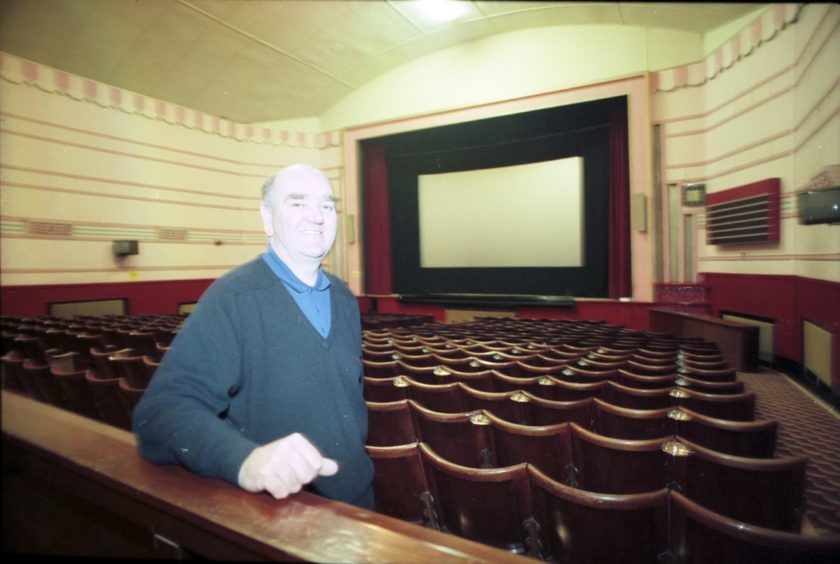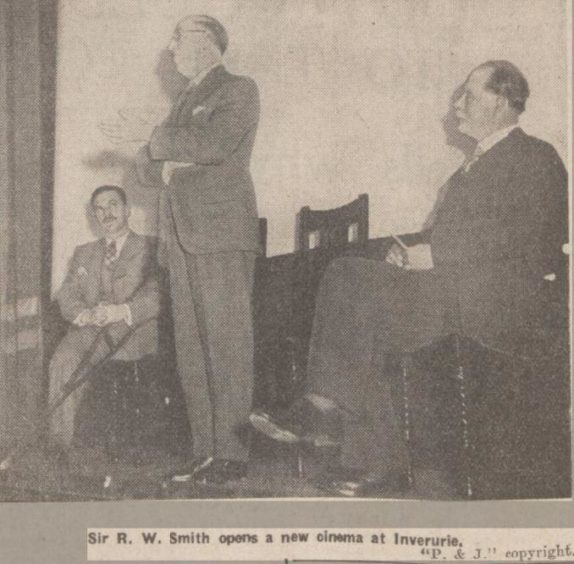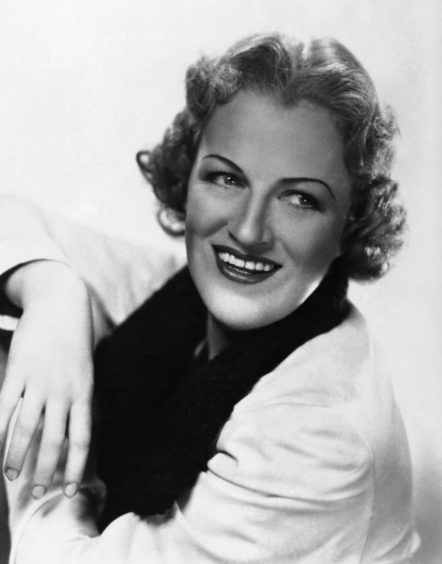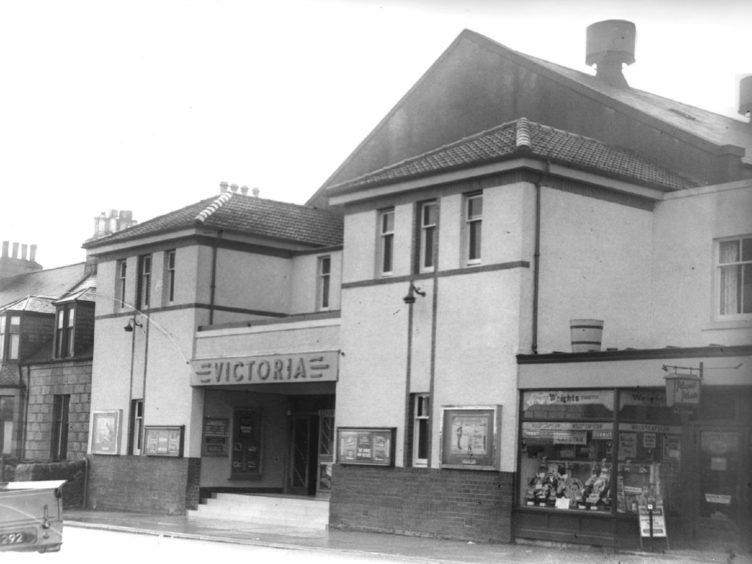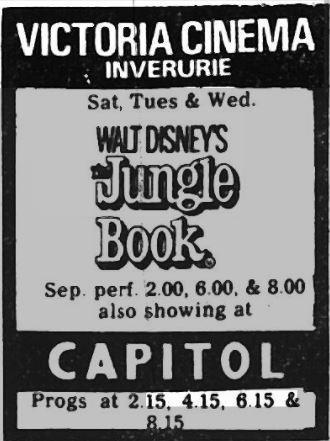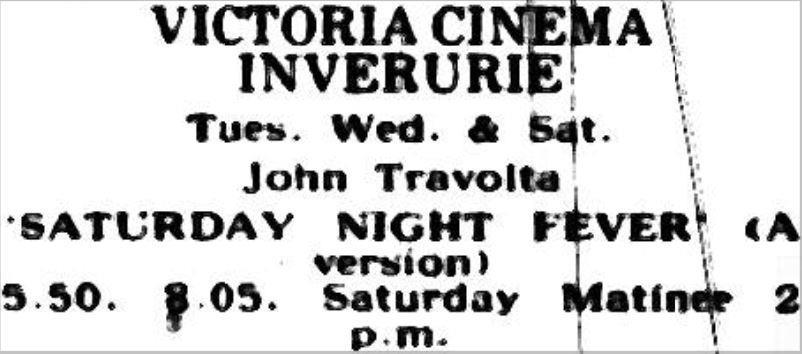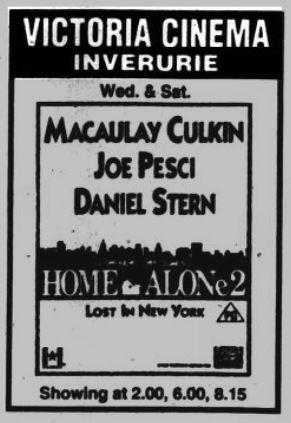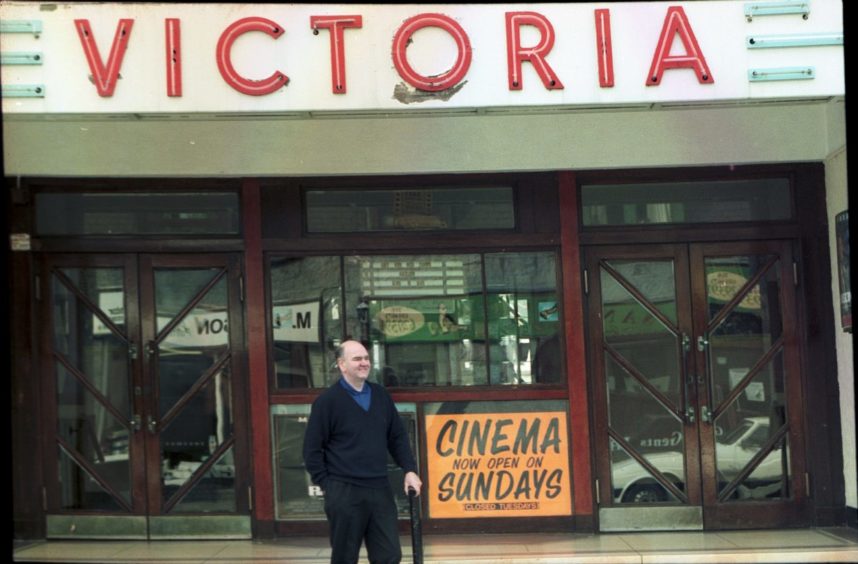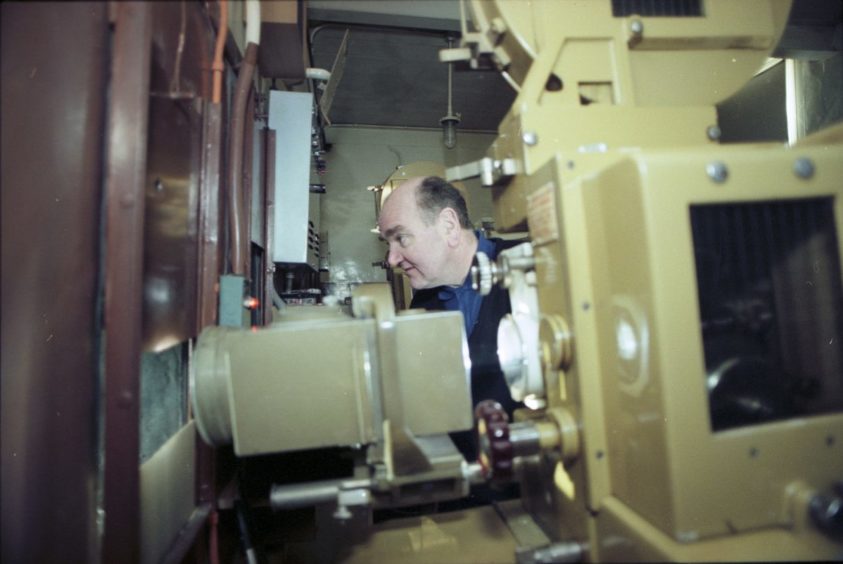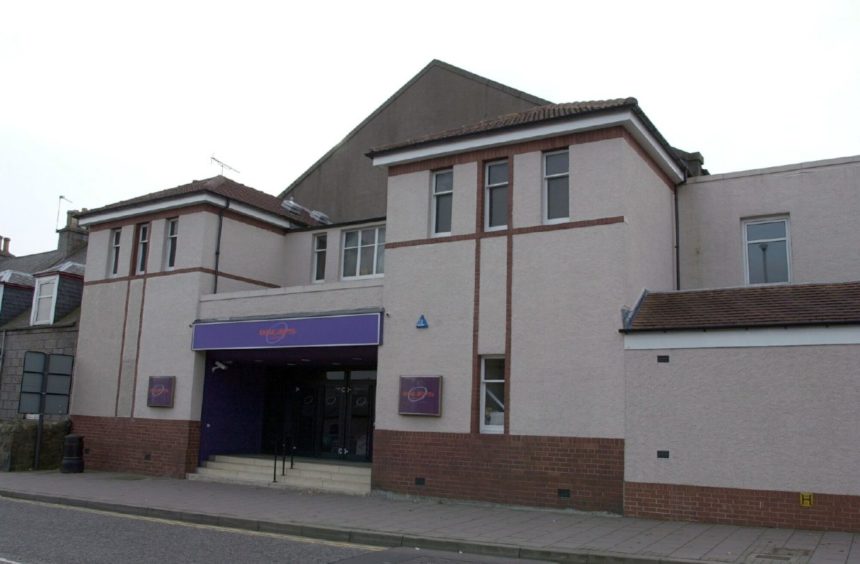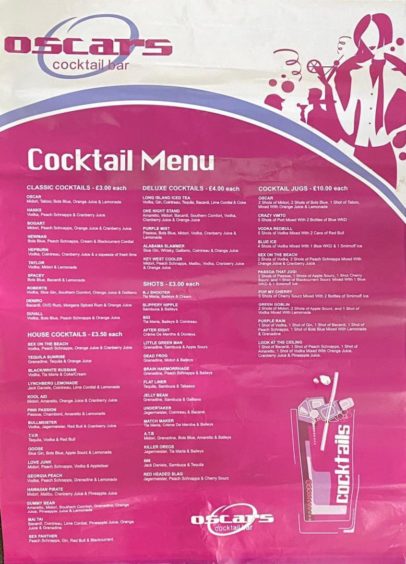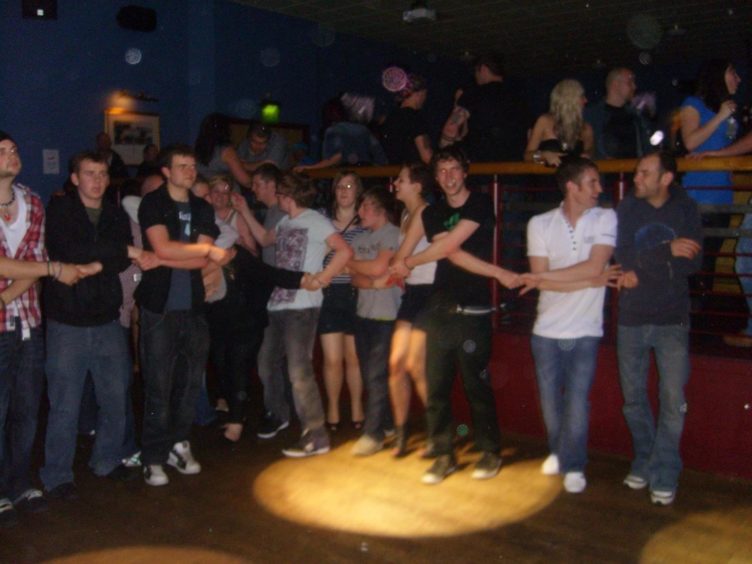The loss of the Victoria Cinema is still lamented in Inverurie, more than 20 years after it closed.
For nearly 65 years, the cinema on the corner of Inverurie’s West High Street and Victoria Street entertained residents of all ages.
From the latest Charlie Chaplin films in the 1930s to comedy horror Scream in the 1990s, the Victoria Cinema showed it all.
But even a 1700-strong petition and proposed community buy-out could not save the Art Deco cinema from closure in 1998.
Ironically, it had been the determination of the community and local funding that meant the cinema opened in the first place.
Funds ran out during build
The people of Inverurie were called “well-advanced and modern” in their desire to see a dedicated cinema open in the town during the 1930s.
In previous years, films had been shown by Inverurie Cinema Company at Inverurie Town Hall.
The town had prospered and grown exponentially with the Loco Works bringing employment and people, but there were calls for better leisure pursuits.
The 30s may have been the golden age of cinema, but times were hard during the Great Depression.
Inverurie’s cinema was only half-built when funds from a local enterprise ran out.
The project was scaled back but still cost around £10,000 (the equivalent of £731,898 today).
The completion of the build hinged on shares being bought by the public, with architect behind the scheme Thomas Scott Sutherland the biggest shareholder.
The master of design behind Aberdeen’s Art Deco picture houses, Sutherland was canny in his investment; the wildy popular Victoria Cinema paid for itself within five years.
Attractive Art Deco building
Initially a 550-seater auditorium was planned, but the cashflow issues meant a proposed balcony never materialised.
Instead, the curiously high auditorium seated 456 patrons with raked seating at the back and stalls at the front.
It was decorated in a traditional style featuring dark red seating – with ashtrays attached – and a colour scheme of pale pink and cream.
Outside, the attractive, symmetrical frontage was unlike any other building in Inverurie, ‘Victoria’ was illuminated in bright red neon lighting.
Ultra-modern, it was rendered in white with red brick and had terrazzo steps that led up to geometric entrance doors.
On the right there was a small newsagent and tuck shop.
Upon opening the cinema, local MP Sir Robert Smith said: “In these times life is rather strenuous, and it is necessary for everyone to have a larger amount of leisure.
“One of the questions was how that leisure was to be employed, and that was where the cinema filled a very big need.
“The cinema could be a boon to Inverurie and district, but it rests with the public of Inverurie to make their cinema a real success.”
Pensioners and the poor were invited to the opening on October 24 1934, when the first film shown was a Gracie Fields comedy drama ‘Love, Life and Laughter’.
Health and safety breach
But the cinema was no laughing matter for one nearby resident who took the owners to court over its oil generator in 1936.
Miss Forbes, who stayed at 61a West High Street and owned numbers 67-69, said the oil engine used to power the cinema was a nuisance and safety risk.
Inverurie Picture House Ltd appeared before a sheriff accused of breaching the Public Health (Scotland) Act 1897.
They were accused of allowing the exhaust of the engine to “send forth fumes, spray iron ore” and “annoy” local residents with vibrations.
Miss Forbes complained that the fumes were poisonous, the spray had damaged clothes on the bleaching green and the vibrations made the wash-house ceiling fall in.
The cinema said if the engine stopped, the picture house would close down, but Miss Forbes argued the health of tenants was more important than the entertainment of the townsfolk.
The cinema claimed the wash-house had fallen down before the engine started and that the iron ore was sprayed accidentally on one occasion.
But Miss Forbes’ complaint was upheld and she was awarded £150 in expenses.
In the meantime, the cinema had found a new solution in electricity – the Victoria Cinema was now connected to the mains.
Halcyon days of cinema
Happier times lay ahead; there was great excitement in Inverurie the following year for the Coronation of King George VI.
As well as events and galas, as a treat, local children were taken to the Victoria Cinema to watch special news reels of the celebration.
Pupils from rural schools at Logie Durno and Chapel of Garioch took the train from Pitcaple to Inverurie to watch the film.
As well as being a place for pursuing leisure, Victoria Cinema took its role in the community seriously.
Victoria Cinema features in this video of Inverurie Children’s Day from 1938.
Free screenings were held at Christmas for pensioners, and regular schemes were held to raise funds for vital local causes.
In 1937, one of the biggest fundraising drives in the region was to help plug the funding deficit for the new infirmary in Aberdeen.
Cinemas in Aberdeen and Inverurie raised £631 in one week through Sunday showings – £43,957.13 in today’s money – proving to be one of the biggest benefactors to the hospital.
The cinema’s great fortunes continued, and at one point plans were afoot for a second “super cinema” in Inverurie, to be based at 20-22 North Street.
During the war years, news reels brought the reality of war in Europe to life in Inverurie.
Meanwhile the cinema helps raise funds for the Red Cross and troops appeals.
In 1956, the cinema was bought over by Aberdeen Picture Palaces who owned the Art Deco Capitol Cinema in Aberdeen.
The takeover saw Cinemascope installed – a widescreen projection system that suited the venue.
The lack of balcony was actually an advantage – there was a straight line of projection from the booth to the screen providing a clear picture.
The End?
The Victoria remained at the heart of the community, taking part in Inverurie Gala each year – even taking first prize for best-dressed building in 1969.
It struggled to compete with cinemas in Aberdeen like ABC which had more than one screening at a time.
But the Victoria still brought blockbusters like Saturday Night Fever to the Garioch – and even some questionable-sounding blue movies – in the 1970s.
Over the decades, thousands of Inverurie schoolchildren made the annual pilgrimage down to the cinema for their festive film treat at the end of term.
And like many cinemas, the Victoria also turned to bingo, but hosted bingo nights rather than a wholesale transformation like the fate of other picture houses in Aberdeen.
But as technology progressed and films became more sophisticated, the Victoria struggled to keep up.
By the late 1990s it simply could not compete with multiplex cinemas in Aberdeen.
The Victoria was the last purpose-built picture house in the region to cling on before the final curtain was brought down in 1998.
Owners Aberdeen Picture Palaces said it was no longer viable to keep the cinema open and that it had to close for commercial reasons.
Inverurie Community Association hoped the cinema could attract lottery funding and be bought out as a local enterprise, but the attempts were in vain.
Antz, shown on Christmas Eve 1998, was the last-ever film to wind off the 50-year-old Gaumont President Projector.
It was a quiet end for a cinema that had been so desperately wanted almost 65 years before.
Then manager Richard Jessiman, who had worked at the venue for 37 years, described it at the time as “a big wrench to see it close as a cinema”.
Richard was synonymous with the Victoria, and was renowned for his kindly nature – he didn’t start a film until the last straggler was seated.
Nostalgic nightclub
The owners wanted to turn the venue into a nightclub with a nostalgic film theme, but the scheme was blocked by local councillors who feared the bar would create noise and antisocial behaviour.
It was only when Aberdeen Picture Palaces appealed to Scottish Secretary Donald Dewar in 1999 that the councillors’ decision was overturned.
Within weeks, the internal Art Deco fixtures, old cinema seating and doors were ripped out and replaced with a lowered ceiling, a central hexagonal bar and a DJ Booth.
Gone was the pale, delicate interior, it was replaced with a dark blue cocktail bar with dim lighting.
But there was still a nod to the Victoria – a small pub on the side where the shop once stood was called The Auld Vic.
The bar itself was called Oscars as a tribute to the building’s movie history – a giant, gold Oscar statue stood on top of the bar, and there was an extensive array of cocktails named after film stars.
Many people will remember the bright green signature cocktail ‘Oscar’ – along with a host of other house cocktails that cost just £3.
Oscars proved tremendously popular for just over a decade – in its heyday bus runs would be organised between it and bigger clubs in Aberdeen like Amadeus.
But clubs too fell out of fashion and the owners decided to sell the venue.
Oscars’ last night was September 25 2010 and the premises were bought over by JD Wetherspoon.
The building was renovated and reopened in 2011 as The Gordon Highlander, named after the only surviving locomotive built at Inverurie Loco Works.
